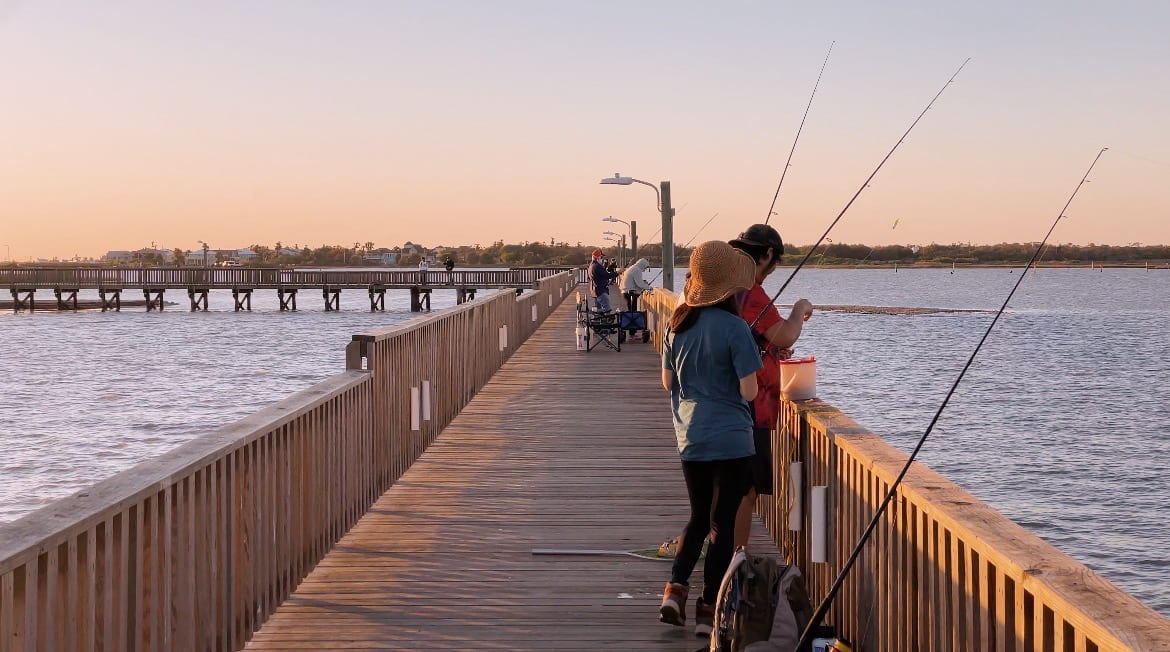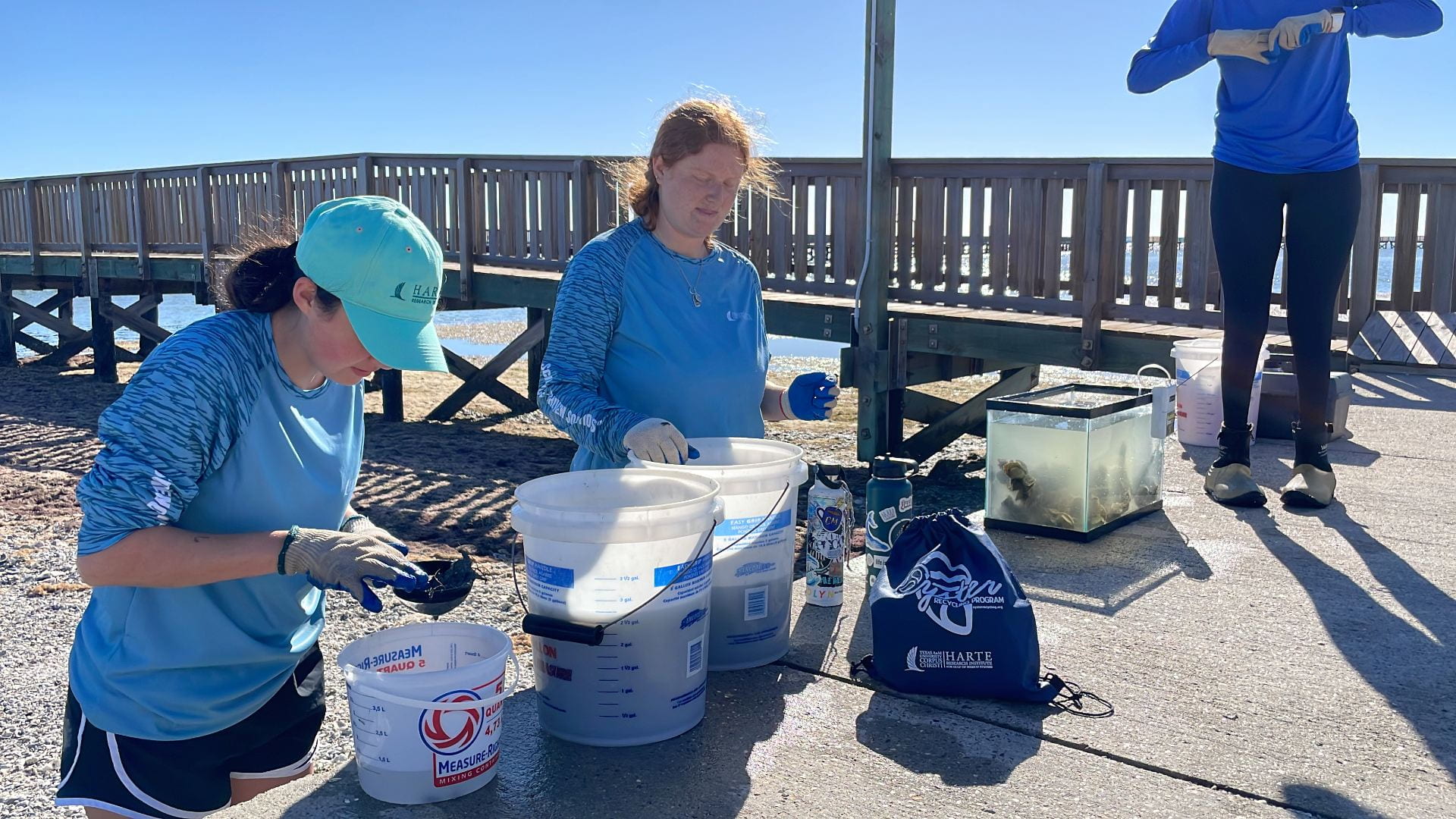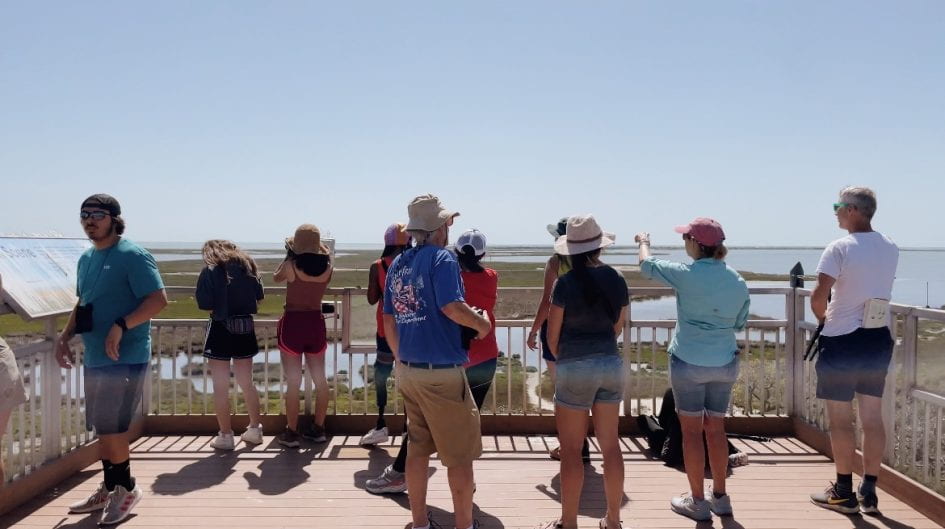
Sunset at the pier of Goose Island State Park (Photo by: Maolana Katagiri)
It was a crisp morning on the Texas coast, with the sun just starting to peek over the horizon. We were on a mission to discover the wonders of this magnificent region and our first stop was at the pier of Goose Island State Park. There, we had the pleasure of meeting with three fascinating individuals, each of them a wealth of knowledge on the Oyster Recycling Program, Sink Your Shucks. As they took us through the program’s intricate web of conservation practices, we were left amazed by the critical role that oysters play in the coastal ecosystem. It was a remarkable experience, one that left us with a deep appreciation for the natural world around us.
Now, if you’re not already familiar with oysters, let me tell you: these bivalve mollusks are more than just a delicious delicacy. In fact, they play a crucial role in the health of our coastal ecosystems. Oysters act as natural filters, removing pollutants and improving water quality. They also provide a habitat for a wide variety of marine life, including fish and crustaceans. In other words, oysters are the unsung heroes of our coasts.

The oyster recycling program, Sink Your Shucks presents the importance of oysters on the Texas Coast (Photo by: Maolana Katagiri)

A closer look at the structure of an oyster (Photo by: Maolana Katagiri)
Unfortunately, oyster populations have been on the decline in recent years due to a number of factors, including overharvesting, habitat loss, and disease. This decline not only affects the environment but also the economies of coastal communities that depend on the oyster industry. And that’s where Sink Your Shucks comes in.
The program collects discarded oyster shells from restaurants and other sources and aims to restore oyster populations in the Gulf of Mexico by creating new oyster reefs. It’s a simple yet effective process. Recycled oyster shells are used as the foundation for the reefs, providing a substrate on which new oysters can attach and grow. The reefs not only restore oyster populations but also provide habitat for other marine life and improve water quality.
One of the things that make Sink Your Shucks so unique is its community involvement. The program partners with local restaurants and businesses to collect discarded oyster shells, raising awareness about the importance of oyster recycling and engaging the community in the conservation effort. This approach not only benefits the environment but also strengthens the relationship between the oyster industry and the community. The Sink Your Shucks program is a shining example of how innovation and community involvement can be used to address pressing environmental issues. By recycling discarded oyster shells and creating new oyster reefs, the program is helping to restore oyster populations, improve water quality, and support coastal economies.

The observation deck at the Aransas National Wildlife Park (Photo by: Maolana Katagiri)
The next day, after an incredible trip to Goose Island State Park, we headed over to the Aransas National Wildlife Park guided by the Belaire family. As we stepped into the breathtaking beauty of the park, I couldn’t help but feel a sense of appreciation for the natural world around us. The park is not just a stunning destination for visitors, but it also plays a critical role in the preservation and conservation of our planet’s diverse array of wildlife. Located on the Gulf Coast of Texas, this breathtaking park is home to over 400 bird species and a variety of other wildlife, including alligators, dolphins, and sea turtles.

Enjoying the beauty of Aransas wildlife through the observation deck (Photo by: Maolana Katagiri)
But it’s not just the impressive biodiversity that makes this park so important. Aransas National Wildlife Park is also home to one of the world’s most critical wintering grounds for the endangered whooping crane. With only around 800 of these majestic birds left in the world, the work being done at Aransas to protect and preserve this species is truly invaluable.
National wildlife parks like Aransas play an integral role in educating the public about the importance of conservation efforts and providing a safe haven for endangered species. By visiting and supporting these parks, we can help ensure that future generations can continue to marvel at the beauty and wonder of our planet’s precious wildlife.

Walking through the track to explore the wildlife animals and plants (Photo by: Maolana Katagiri)
In the end, our trip to Aransas National Wildlife Park reminded me of the importance of protecting our planet’s biodiversity. National wildlife parks like Aransas provide a glimpse into the beauty and wonder of our natural world, and they play an essential role in preserving it for generations to come. So let us all do our part to support and protect these valuable ecosystems, and ensure that future generations can experience the same awe-inspiring sights and sounds that we did during our visit to Aransas National Wildlife Park.
(Written by: Maolana Katagiri, Ryan Riojas, and Wren Conner)

Leave a Reply